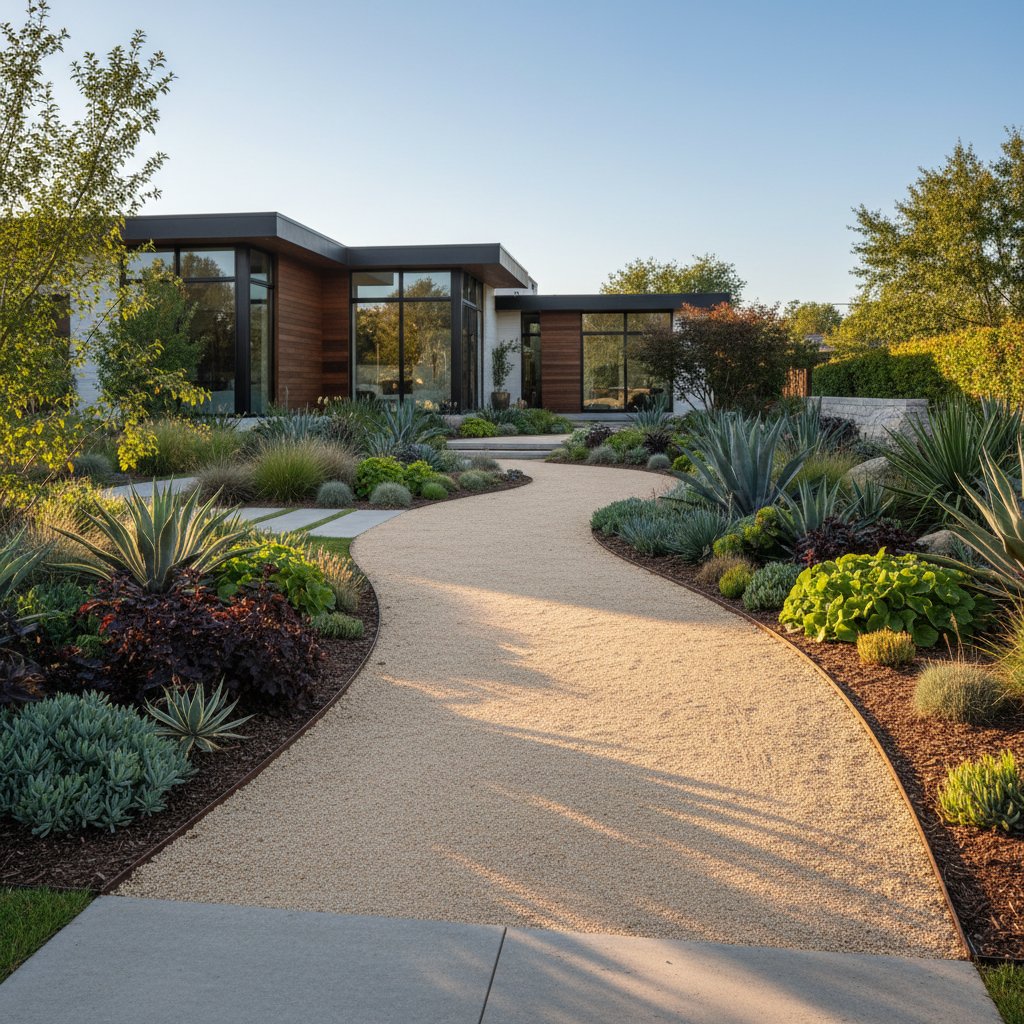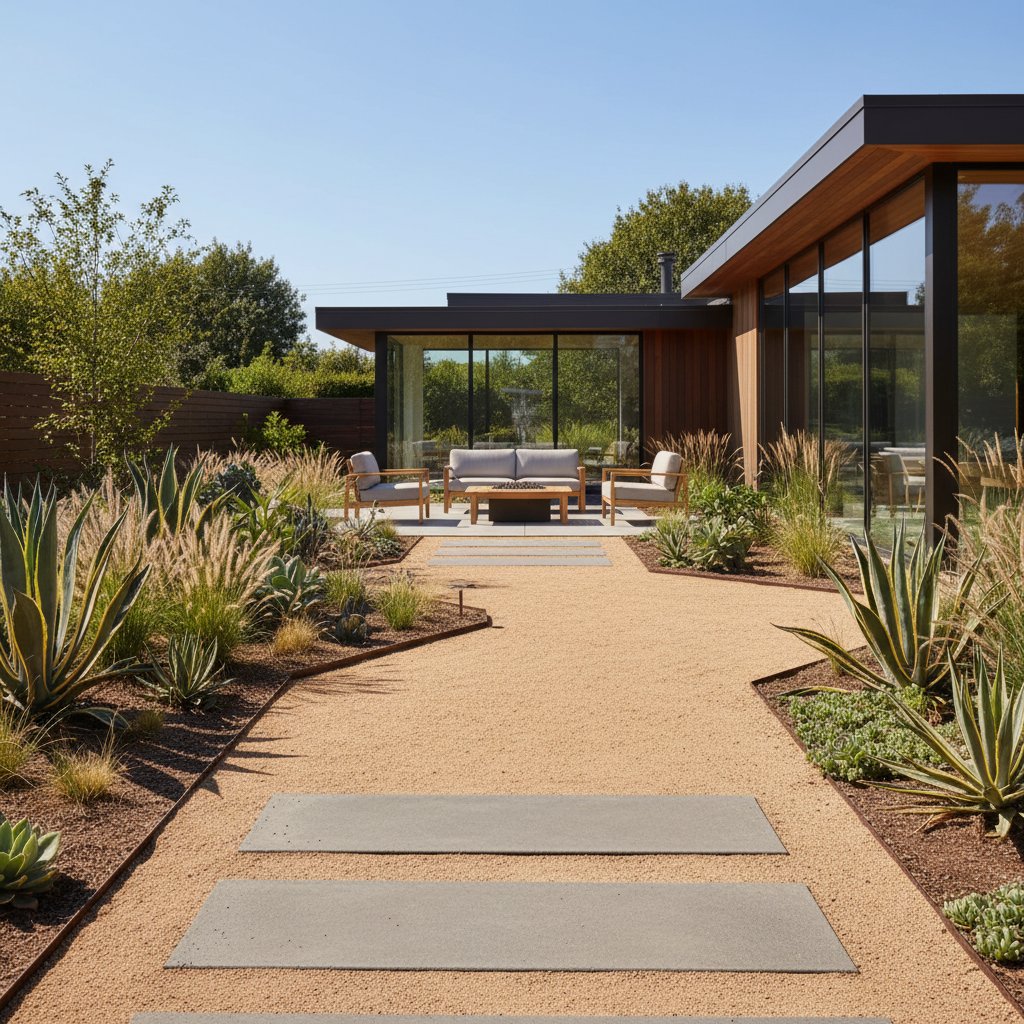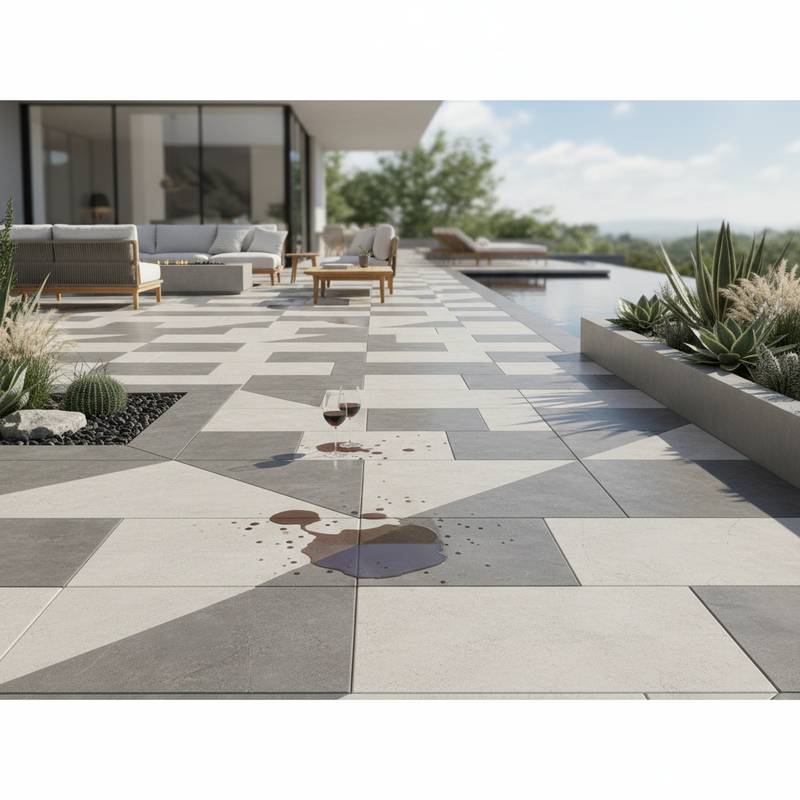Why Decomposed Granite Is the Ultimate Low-Maintenance Path
Homeowners seeking a walkway that appears natural, drains effectively, and requires minimal upkeep often select decomposed granite as a practical option. This material provides the aesthetic appeal of stone pathways without the expense or intensive labor associated with concrete or pavers. Professionals frequently recommend it for garden paths, patios, and driveways, as it harmonizes visual charm with reliable performance.
This guide details the nature of decomposed granite, its performance characteristics, associated costs, and installation and maintenance procedures. Readers gain insights to determine whether this material aligns with specific landscape objectives.
Reasons Homeowners Select Decomposed Granite
Decomposed granite combines aesthetic appeal, affordability, and functionality to suit diverse yard designs.
Natural Aesthetic
The fine grain and subtle hues of decomposed granite integrate seamlessly with lawns, gardens, and wooded settings. Unlike the stark appearance of concrete or asphalt, which may disrupt harmonious landscaping, decomposed granite enhances organic environments. It proves particularly suitable for naturalistic or drought-resistant landscapes, where it mimics the texture of natural soil and stone.
Minimal Maintenance Requirements
After proper compaction, decomposed granite maintains stability and facilitates rapid drainage. Homeowners avoid concerns such as standing water or surface cracks. Routine tasks involve occasional raking or adding a thin layer of material every few years to preserve appearance. The absence of joints eliminates weeding needs, and repairs remain straightforward without extensive effort.
Effective Drainage Properties
Water permeates decomposed granite readily, rather than pooling on the surface. This feature suits regions with seasonal rainfall or areas designed to minimize runoff. Additionally, it prevents the formation of muddy areas adjacent to garden beds, promoting healthier plant growth and reducing erosion risks.
Cost-Effective Solution
Decomposed granite pathways incur lower expenses than poured concrete or brick installations. Regional variations and color selections influence pricing, yet materials typically range from one to three dollars per square foot. Including delivery and professional installation, total costs seldom exceed five dollars per square foot, positioning it among the most economical hardscaping choices available.
Versatile Design Applications
The malleability of decomposed granite allows for easy shaping, accommodating curved or irregular layouts more effectively than rigid alternatives. Designers create subtle slopes or meandering routes through garden beds without the need to cut or align individual units. This flexibility supports creative landscaping projects tailored to unique site contours.
Installation Guide for Decomposed Granite Paths
Individuals comfortable with basic landscaping tasks can undertake decomposed granite installation independently. The procedure generally spans one to two days, depending on the pathway's dimensions and complexity.
Step 1: Planning and Marking
Determine the pathway's route and outline it using spray paint, rope, or a flexible garden hose. Standard walkways measure two to three feet in width to accommodate pedestrian traffic comfortably. For pathways intended for wheelbarrows or garden carts, increase the width to four feet or more to ensure practicality.
Step 2: Site Excavation
Remove soil to a depth of approximately four inches across the marked area. Clear away roots, large stones, and other debris to prepare a clean foundation. Level the base evenly, incorporating a slight slope of one to two percent to direct water away from structures and promote drainage.
Step 3: Base Layer Preparation
Distribute two to three inches of compactable gravel or class II road base material over the excavated area. Use a hand tamper for smaller sections or a plate compactor for larger ones to achieve firm consolidation. This underlying layer ensures long-term stability and minimizes future settling or unevenness.
Step 4: Edging Installation
Position edging materials along both sides of the path to contain the decomposed granite. Options include galvanized steel, durable plastic, or natural stone borders. Proper edging installation defines the pathway's boundaries crisply and prevents lateral spreading over time.
Step 5: Decomposed Granite Application
Evenly spread the decomposed granite to a thickness of about two inches atop the base. Lightly moisten the surface with water to aid compaction, then press it down firmly using appropriate tools. For stabilized variants, adhere to the manufacturer's guidelines regarding additive incorporation, mixing ratios, and curing durations to enhance binding.
Step 6: Final Compaction and Settling
The completed surface should yield a firm yet yielding texture, distinct from the rigidity of concrete. Allow the material to dry thoroughly before applying foot traffic. During the ensuing weeks, natural settling occurs, resulting in a refined, smooth finish that enhances the pathway's natural character.
Pros and Cons Overview
Advantages
- Provides a natural appearance compatible with various landscapes
- Offers affordability relative to alternative hardscaping materials
- Features permeability that facilitates superior drainage
- Delivers comfortable footing for everyday use
- Allows straightforward installation and simple repairs
Disadvantages
- May experience minor shifting on inclined surfaces or with intense usage
- Unstabilized forms can adhere to footwear or animal paws, causing tracking
- Requires occasional replenishment to maintain even levels
- Proves less suitable for freeze-thaw cycles or heavily trafficked driveways
Opt for stabilized decomposed granite to achieve a more secure surface. Although it involves a modest additional cost, this version minimizes tracking issues and performs reliably in moist or gusty conditions.
Design Integration Strategies
Decomposed granite adapts to multiple garden aesthetics. In contemporary settings, combine it with concrete pavers or metal edging to achieve precise, modern lines. For cottage-style or arid gardens, it merges effortlessly with indigenous flora and complementary gravel elements, fostering a cohesive, low-water design.
This material pairs advantageously with flagstone, timber accents, or brick features. Homeowners often incorporate decomposed granite as infill between stepping stones or surrounding patio areas, creating fluid transitions that soften abrupt boundaries and elevate overall landscape flow.
Achieving Lasting Landscape Elegance
Incorporating decomposed granite into outdoor spaces yields enduring beauty with practical benefits. Homeowners enjoy pathways that withstand daily demands while preserving a serene, natural ambiance. By following these guidelines, individuals transform ordinary yards into inviting, resilient environments that require little ongoing attention.



